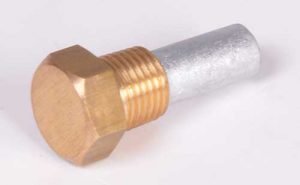Why is engine winterisation so important? The answer is because an inactive boat engine needs to be protected from corrosion during the winter, caused by the rising humidity levels through the cold months and the salty coastal air. This applies whether the boat is left afloat or hauled out over the winter.
Assuming the boat is coming ashore, it is best to winterise the engine in two stages – firstly when the boat is still in the water so you can run the engine and secondly as soon as possible after the boat is secure in the boatyard. You need to allow a few hours to do the work. If other commitments prevent you from doing this within a couple of weeks of lift out, then it would be a good idea to make arrangements for a service engineer to do this for you as winterising should be carried out before corrosion can set in.
Winterisation will vary a little from engine to engine, so it is always best to check the manual. The following is a basic guide that applies to most engines:
Stage 1 – boat in the water
- Run the engine until it is warm. Check all the fuel lines and engine cooling hoses for leaks.
- Stop the engine, drain the oil and change the oil filter. Note: it is much easier to pump warm oil out of an engine than trying to do it when the engine is cold.
- Refill the engine with new oil as recommended by the manufacturer.
- Run the engine to check the oil filter is properly sealed. Switch off and double-check the oil level is correct.
- Fill up the fuel tank to eliminate water condensation in the tank – this is also easier to do before lift out as you can come alongside a fuel berth. Water entering the fuel injection system can cause considerable damage. Added to this, water in the fuel stimulates the growth of bacteria which clogs up the filters. Smear some vaseline around the fuel filler cap threads to make it 100% watertight and easier to open in the spring – there is nothing more maddening than a seized fuel filler cap that will not budge.
Stage 2 – in the boatyard
- Once ashore, protect engine cylinders by removing the injectors and spraying anti-corrosion oil into the cylinders while turning the engine by hand – plain engine oil can be used but special anti-corrosion oil is best. Use a ring spanner on the crank pulley to help turn the engine.
- Engines with closed circuit fresh water cooling systems should contain a 50:50 solution of antifreeze, or as recommended by the engine manufacturer. Drain the circuit and replace as necessary.
- Drain and flush the sea or raw water circuit with fresh water before filling it with an antifreeze mixture to protect it over the winter months. Do this as follows:
(i) Close the inlet seacock to the engine (engine stopped).
(ii) Disconnect the sea water inlet pipe and dip it into a bucket containing 50:50 antifreeze solution.
(iii) Start the engine (out of gear) and run for 10 seconds or so until the antifreeze is used up and can be seen coming out of the exhaust outlet.
(iv) Shut the engine off and reconnect the inlet pipe to the seacock.
- Remove the water pump impeller. The reason for doing this is that if the vanes remain in one position for months on end then they can become permanently deformed and more prone to failure.
- Most engines with raw water cooling have sacrificial zinc anodes to protect the engine from corrosion. On some
 engines the anode is attached to a bolt which screws into one of the end caps of the heat exchanger. The easiest time to replace this is during winterisation. Check your manual to find out where it is.
engines the anode is attached to a bolt which screws into one of the end caps of the heat exchanger. The easiest time to replace this is during winterisation. Check your manual to find out where it is. - Slacken the alternator and water pump drive belts to extend their life.
- Protect the instrument panel and give the key switch a spray with WD40 or equivalent.
- Also protect the engine electrical circuit by disconnecting the connections and spraying them with WD40 or a water repellant spray.
- Clean and inspect the engine from all angles, making sure there are no water, fuel or oil leaks and that all the jubilee clips are in good condition and tight. Also clean the bilges to help reduce humidity and to make it easier to check for leaks that might develop.
- Lubricate the throttle and gear levers and linkages.
- Plug the exhaust outlet and air intake with rags to prevent any moisture from reaching the engine.
- Disconnect the engine battery and clean the terminals. Take the batteries home so they can be trickle charged and stored where they cannot freeze. Note that some owners store batteries on board if they have shore power for trickle charging and can keep the boat interior above freezing through the winter.










